The blue crab (Callinectes sapidus) is a species of swimming crab of the family Portunidae that ranges along the Atlantic coast of North and South America, from Cape Cod to Argentina. It has also been introduced to European and Japanese waters but nowhere is the blue crab better known and beloved than in the Chesapeake Bay area of Maryland and Virginia. Living in Maryland where they’re as popular as lobsters are in Maine I can attest to the celebrity status and cult-like worship this humble crab has received. Aside from having entire restaurants dedicated to serving blue crabs it’s also plastered on an endless variety of merchandise and has been the subject of regional books, art, music and other media. Local festivals celebrate the blue crab, with the town of Crisfield even holding a yearly crab derby where they’re raced competitively. Callinectes is Greek for beautiful swimmer, and sapidus Latin for savory. I cannot think of a more fitting name.
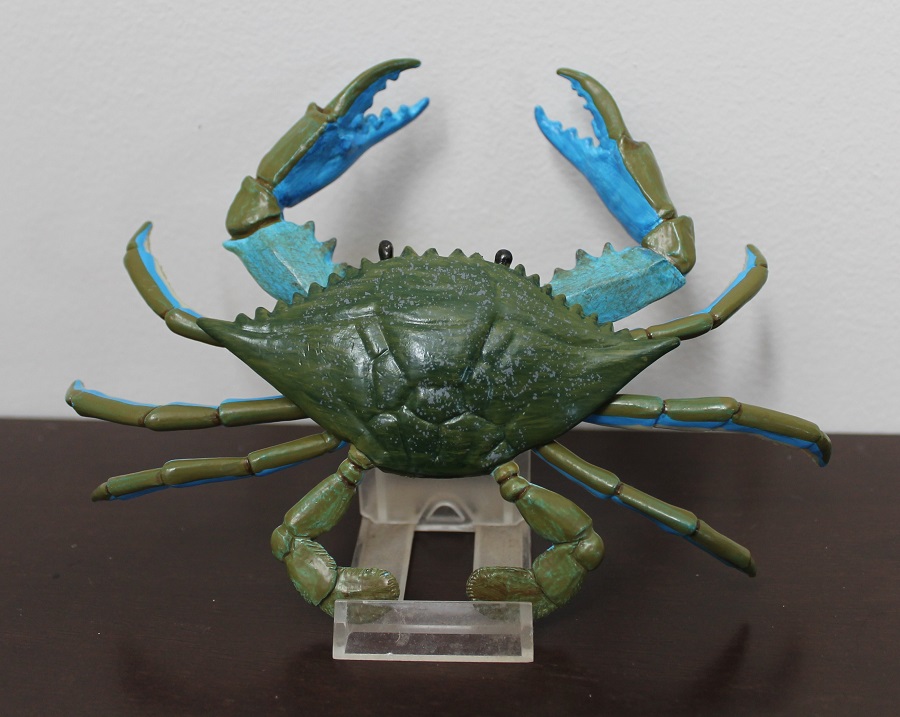
It’s no wonder than that Safari Ltd. has included this animal among their Incredible Creatures line. Produced in 2010 this particular figure is quite popular in local gift shops and it was only a matter of time before I picked one up for review and to add to a growing collection of crab themed home décor.

Blue crabs are measured from point to point of their lateral spines on their carapace, this one measures just over 4” (10 cm) so if I caught it while crabbing it would have to be tossed back, it’s not legal size. Although blue crabs can reach a carapace width of 9” (22 cm) this toy is still in scale with a small adult making it 1:1 scale. At its widest the model measures 7.5” (19 cm).
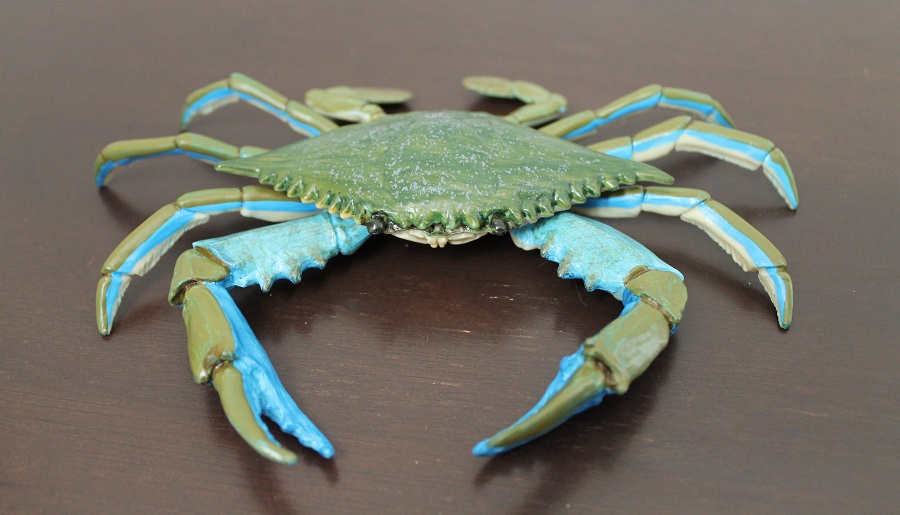
Along the edge of the carapace you’ll notice the anterolateral teeth, blunted here but much sharper in life. Being a decopod (ten-footed) the crab has two pinchers (chelipeds), 6 walking legs (pereopeds), and two swimming legs on the rear. On actual blue crabs the two claws differ slightly from each other with one better suited to pinching and the other crushing. On this toy both claws resemble exaggerated versions of the crushing claws and that’s my one main criticism of the toy. Both claws appear too robust and one should certainly be slightly more slender than the other with pointier teeth.

Aside from the claws the overall anatomy is spot on, and I’ve handled many examples of the real deal. The claws are also painted blue which suggests that this crab is a male, called a Jimmy. Mature females are called sooks and tend to have orange tips on their claws; as though they had their nails painted or tried putting on lip stick as the locals will tell you.
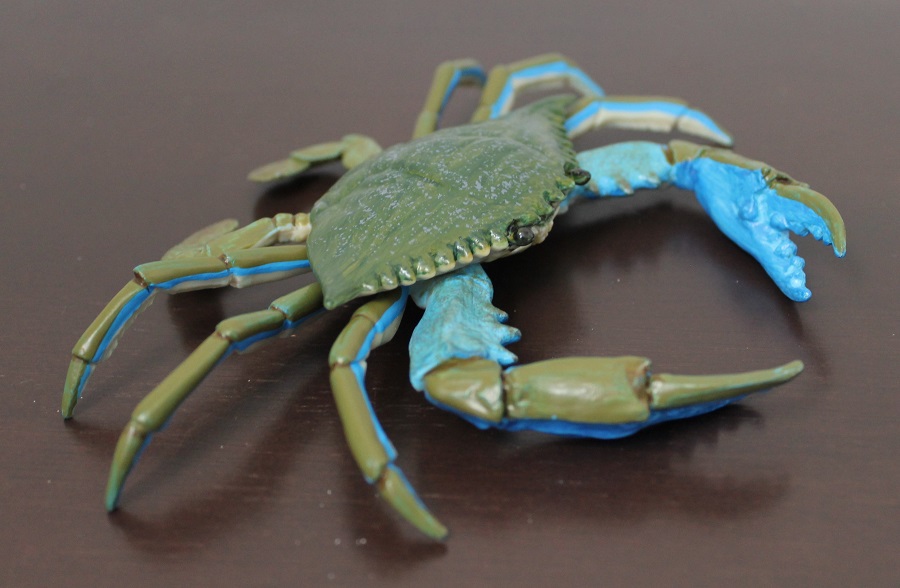
A much more reliable way to sex blue crabs than claw color is to flip it over and look at the shape of the apron. Males have a pointed T-shaped apron, and females a pyramid shaped apron. Or put another way, males have a Washington monument and females the dome of the U.S. capital building. Flipping over this crab you’ll see it is clearly a Jimmy. It’s underneath the apron where the sooks carry their eggs.
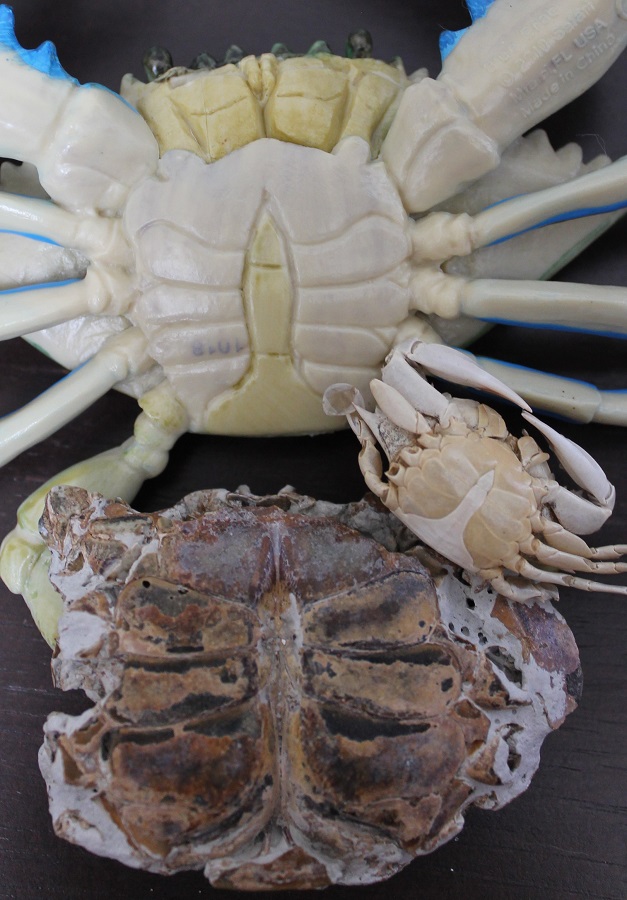
The paintjob is a little hit and miss on this toy. The carapace is nicely painted an olive green color with some speckling. The swimming claws and spiny portion (the merus) were the claws meet the body are a nice blending of green and blue. The underside of the toy is cream-colored. The walking legs and claws are much sloppier looking, with no real blending of colors, thick paint application, and dreadfully obvious brush strokes.
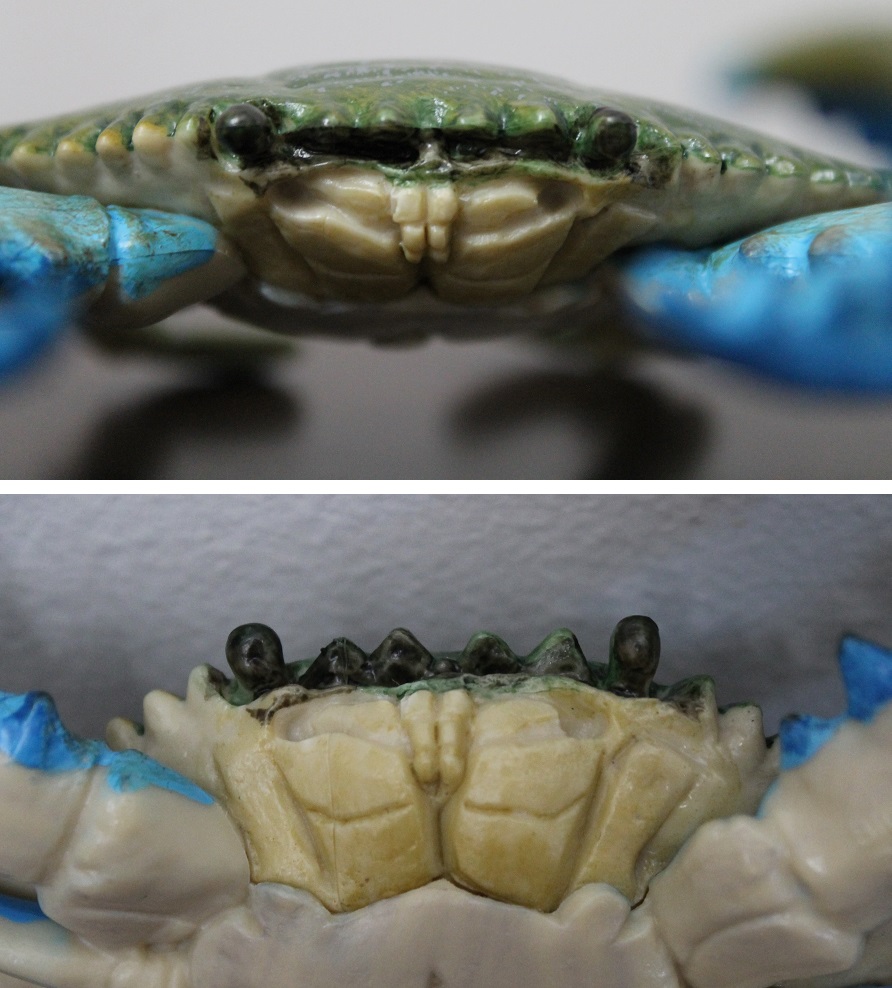

A couple of slight criticisms aside this is a fantastic toy. The detail work is exceptional, lifelike, and anatomically sound. Being life sized I think a custom paintjob could make it appear even more lifelike. You don’t have to live near the Chesapeake to appreciate this beautiful swimmer and it’s widely available online for about $10 U.S..

Disclaimer: links to Ebay and Amazon on the AnimalToyBlog are affiliate links, so we make a small commission if you use them. Thanks for supporting us!



